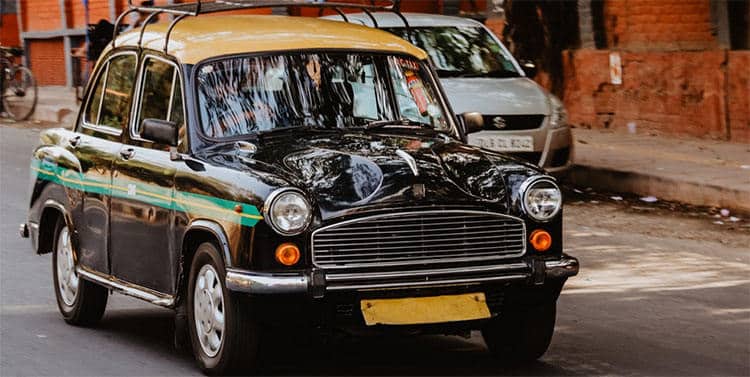India’s Smart City Dream Needs Sub-City Infrastructure

Come monsoon, traffic in India’s largest cities including Mumbai and Delhi slows down to a crawl. Overflowing storm water drains and water logged streets creates chaos. Chennai and Bengaluru vacillates from acute water shortage in summer to the occasional deluge when it pours. Power, internet and cable connections get frequently disrupted. Come winter, the smog takes over. Air pollution peaks and respiratory ailments kill thousands. Solid waste management is inadequate. Garbage dumps over flow at every nook and corner. Lakes turn frothy. Parks and hospitals are dirty and over crowded because of space, as the city and its infrastructure jostle for overground land. Disaster management is totally missing.
India is planning a hundred new smart cities, that could all have similar growth problems. The shortcoming is on multiple fronts, but the biggest problem is shortage of space. With a high population density, there is no space to create adequate infrastructure. So why not build a city and its infrastructure on two levels? Study how London, New York and Busan have created weatherproof city infrastructure decades ago.
How New York was built and keeps growing.
The success of New York is not due to its high rise but from its deep dive infrastructure. The city has been built both upwards and downwards. When the planners of the city decided to go in for skyscrapers in 1890, they decided to dig deep for the service and infrastructure facilities including the New York subway and high speed underground roads for delivery trucks.
A hundred years later, a National Geographic research group investigating under New York found that the city infrastructure was as deep as an 80 story building beneath the earth. More than 32 million miles of utility lines, 22 underwater tunnels, and 443 miles of underground subway tracks were neatly layered. The underground maps looked like a well prepared rocket circuitry with gas lines marked red, steam marked yellow, electric marked orange, pink for telephone, black for television cable, blue for water, brown for sewer.
Cutting across rock faces and granite formed 500 million years ago at a depth of upto 700 feet the utility lines, a three layer highway and the New York rapid transit subway cross crossed the city and under the Hudson and Harlem rivers. All that was twenty years ago. Today the infrastructure is 1000 feet deep, more modern, smarter and high tech.The NYSGPO maps have been updated since 2010 and takes the infrastructure mapping of the city to a new level with GIS and GPS mapping. Building underground infrastructure and bye laws for multiple sub city infrastructure services to coexist together is a developed science today.
Smart city Busan even manages typhoons
India’s metros are disrupted every monsoon. By comparison, Busan, a bustling port city of South Korea with a population of 3.5 million is a smart city that was first built in the second century. Like Mumbai it was congested and overflowing and a prime trading port since the fifteenth century. Busan was rebuilt after the devastating Korean War, but was hit by consecutive cyclonic storms Typhoon Gladys in 1991, Typhoon Rusa in 2003 and Typhoon Chaba 2016.
The city is prone to extreme weather, cyclones, typhoons and earthquakes that cause damage and devastation. So investment has been done on identified high risk areas by increasing sewer capacities locally, using underground water tanks. Besides flood control is done by utilising flood forecasting techniques and using levees, stream gates, dams and submersible pumps. In 2017 Mayor Suh of Busan asked a tech major to introduce cognitive analytics to its world class disaster management capability.
London infrastructure is even older but delivers
In 1858 London witnessed “the great stink” during summer when untreated sewer in underground pits along with industrial effluents gave out a putrid stench. A combined underwater sewerage system complete with interceptor sewers and waste water plants was built that took the recycled waste water away from the municipal areas. Few of those manholes that open into 5 foot diameter pipes leading to trenches built 150 years ago, still operate. Similarly under ground water works supply quality potable drinking water to 9 million people today. The London Underground Tube was put in place in 1863. Telephone, cable, electricity, and internet connections all run underground.
To be a smart city we have to organise infrastructure below the earth. Mumbai and Delhi have high rises like what New York had a century ago. But its infrastructure, its utilities, its metro lines, its service roads are grossly inadequate and mostly overground. Internet and telephone connectivity alone does not make a city smart. The planners of Indian cities must start thinking afresh. We cannot be digging at random and keep manholes and pipe trenches uncovered. We need to understand how underground sub cities are developed below a megapolis to make cities smart, and functional.
Have you read?
# Top 20 Richest Sports Team Owners In The World, 2018.
# India Rich List For 2018: Richest Indian Billionaires.
# China Rich List For 2018: Richest Chinese Billionaires .
# Richest Women In The United States For 2018.
# Best CEOs In The World 2018.
Bring the best of the CEOWORLD magazine's global journalism to audiences in the United States and around the world. - Add CEOWORLD magazine to your Google News feed.
Follow CEOWORLD magazine headlines on: Google News, LinkedIn, Twitter, and Facebook.
Copyright 2025 The CEOWORLD magazine. All rights reserved. This material (and any extract from it) must not be copied, redistributed or placed on any website, without CEOWORLD magazine' prior written consent. For media queries, please contact: info@ceoworld.biz








